- Home
- About us
- Blog
- Shop
-
- Brands
- ALL Brands List
- Acoustical Systems
- Analog Relax
- Antipodes Audio
- Astell & Kern
- Audio Solutions
- AudioByte
- AudioCircle
- Audiomica Laboratory
- Canary Audio
- Canor Audio
- Chameleon Audio
- Clarisys Audio
- CSPort
- Dan D'agostino
- Eversolo
- Ferrum Audio
- Fezz Audio
- Fonolab
- Glanz
- HiFiMAN
- HoloAudio
- LAB 12
- LAIV
- LampizatOr
- Magico
- Mega Acoustic
- Monrio Audio
- Origin Live
- Pachancko Labs
- Phasemation
- Pink Faun
- PLiXIR
- Qualiton
- Reed
- Remton
- Revival Audio
- Riviera Audio
- Rockna Audio
- Sbooster
- Shelter
- Sigma Acoustics
- Signal Projects
- SOtM Audio
- SPEC
- Takatsuki
- Takumi
- Tedeska
- Tellurium Q
- Trafomatic Audio
- Tsakiridis Devices
- Volumio
- Sales
- Second Hand Deals
- Account

AudioSolutions Figaro M Loudspeakers Review
When, last July, I reviewed the AudioSolutions Figaro B stand-mounted loudspeaker, I was impressed with what I heard. I mentioned how, above 100Hz, the Figaro B’s midrange was accurate and smooth, while its top end was extended and grain-free, never sounding etched or over accentuated. Transparency, detail retrieval, and imaging were all topnotch. Below 100Hz, however, the Figaro B lacked weight and extension, even for a two-way minimonitor, and I said that I’d love to hear the B’s larger, three-way siblings.
Well, a few weeks after committing those words to paper, I found myself at Montréal Audio Fest 2019, reporting on the show for Soundstage! Access. Doug Schneider noticed that the Figaro Ms were being showcased and said, “Let’s see if you can bring these home for a review.” AudioSolutions’ distributor was happy to oblige — and here I am in my listening room with a beautiful pair of Figaro Ms.
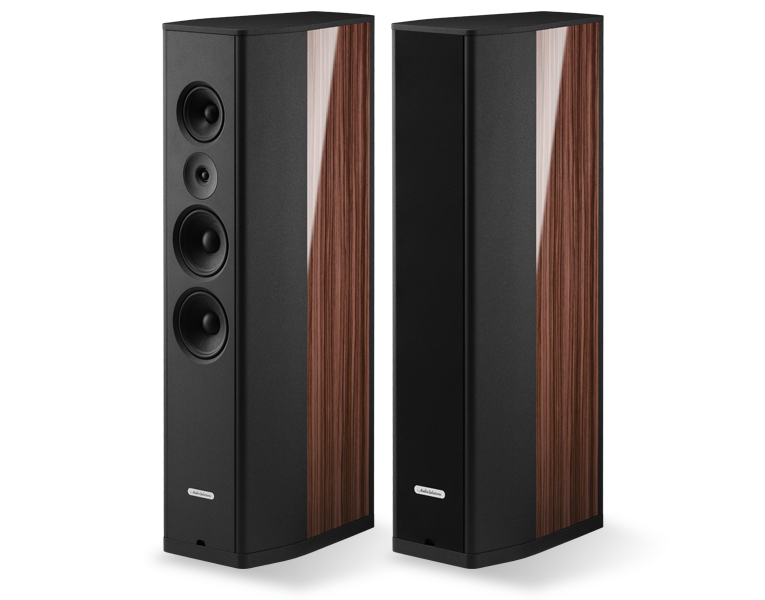
Description
AudioSolutions was founded in 2011, in Lithuania, by speaker engineer Gediminas Gaidelis. He’s still in charge, still designing and building speakers. In fact, all aspects of the design and manufacture of all AudioSolutions speakers are done at their headquarters in Vilnius. The Figaro series comprises six models, including four three-way floorstanders. Starting with the smallest, these are the Figaro S ($5750/pair, all prices USD), the Figaro M ($7500/pair), the Figaro L ($10,000/pair), and the rather imposing Figaro XL ($15,000/pair), which, even if I wanted to review it, is entirely too large for my room. There are also two two-way models: the Figaro C center-channel speaker ($2500 each) and the Figaro B ($3250/pair), the only minimonitor.
The prices seem reasonable for what’s offered. The Figaro M is not your typical rectilinear tower speaker. It stands 44.1”H x 10.7”W x 18.5”D, but those are only its overall dimensions — in cross section, the Figaro models are more trapezoidal than rectangular. The front and rear panels are parallel to one another, as are the top and bottom, but the side panels are not. From above, the sides flare out from the front baffle, then taper back toward the rear panel, which is a good bit narrower than the front. I imagine it’s tricky to build a cabinet this way, especially for a speaker that weighs 90 pounds.
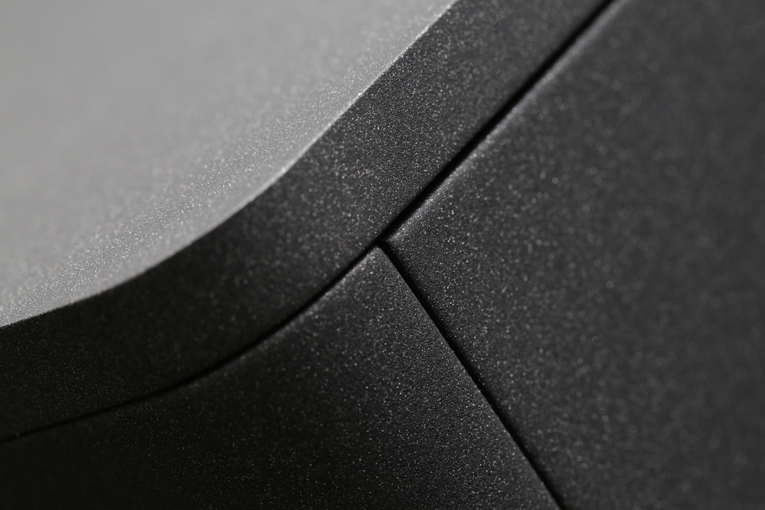
The finishes offered for the Figaro line are unique. Most of the surface of every Figaro M is covered in a nice, dark-gray finish with a granulated texture, which appears to be very durable. This aspect of the finish is nonnegotiable — but you can let your inner interior designer loose by customizing the speaker’s rear side panels. AudioSolutions offers 17 options of color and pattern — my review samples came in a Marine Blue that I found attractive. The overall fit and finish of the speakers was top quality — they’re nice to look at. On the rear panel are a port and one pair of quality five-way binding posts; on the bottom, four wide, height-adjustable rubber feet.
A unique feature of the Figaro line is what AudioSolutions calls their “stealth” grille, something that left an impression on me when I reviewed the Bs. Like most speaker manufacturers, AudioSolutions offers its customers the choice of listening with or without grilles. But the “stealth” grille actually comprises two front baffles, one with a cloth grille, and one with no mesh but perfectly beveled cutouts for the drivers. The baffles are made of the same rigid, granular-textured material as most of the rest of the cabinet. Once either is pressed into place, it’s perfectly flush with the side panels, and provides two benefits: a clean, minimalist look, and pretty much identical sound. Removing one of these is easy: stick a finger through a small notch at the bottom and pull.
For my time listening to the Figaro Ms, I chose the grille-less baffle. The Figaro M has four drivers: a 1”, “mini-horn loaded” silk-dome tweeter that’s crossed over at 4kHz to a 6” midrange driver with an extra-rigid (ER) paper cone, this in turn handing off at 400Hz to two 7” ER paper-cone woofers. The tweeter is below the midrange and above the woofers, which is hardly unique — PSB and SVS do this — but not nearly as common as having the tweeter above the midrange.
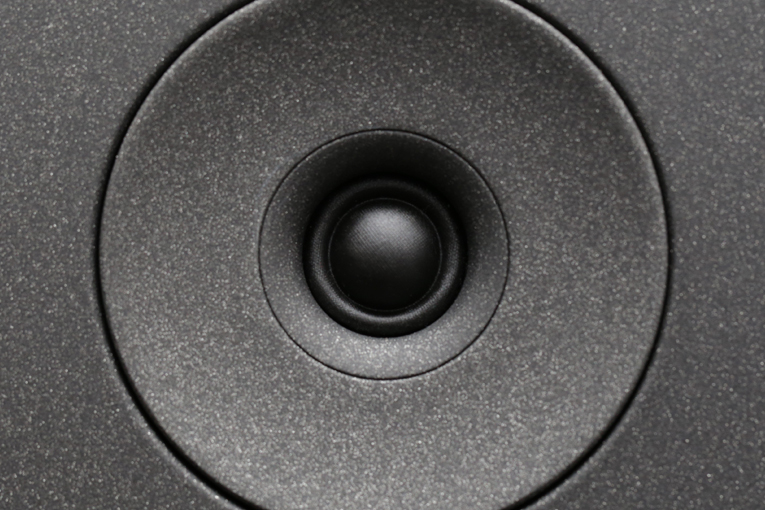
The Figaro M is specified to have a nominal impedance of 4 ohms, an in-room frequency range of 32Hz-25kHz, a sensitivity of 91.5dB/2.83V/m, and a range of power handling of 140W RMS to 280W. AudioSolutions explains that the cabinet is a “self-locking” design with the same internal joint system found in their flagship fifth-anniversary series, the Vantage models. They also claim that in the Figaro line they’ve made all the weaknesses of their old Rhapsody range into strengths, while lowering the price by using more efficient production practices. Setup Unpacking the Figaro Ms unassisted took a bit of elbow grease. Once I’d wrestled them out of their boxes, I placed them in my usual positions for speakers: along one long wall, the speakers toed in 18° and, with my high-backed recliner, describing a 9’ equilateral triangle. My listening room is relatively small (15’L x 12’W), and it’s isolated, insulated, and quiet.
The side and front walls are treated with broadband absorption, with a bass trap in each front corner. The wall behind my seat has a variety of diffusion. I was at first concerned that the Figaros might sound boomy — they looked big in my room — and because of the cabinets’ depth, the rear panels were only 14” from the front wall. Since AudioSolutions’ specs indicate a nominal impedance of 4 ohms, I connected the Figaro Ms to the 4-ohm output taps of my McIntosh Laboratory MC302 power amp.
Upstream, I used my Bluesound Node streamer as a Roon endpoint, controlled via the Roon Remote app installed on a Samsung Galaxy Tab S smartphone. The Node was connected via TosLink optical link to my miniDSP DDRC-22D processor, its digital output in turn connected via TosLink to the DAC in my McIntosh C47 preamplifier. The C47 is connected to the MC302 via balanced interconnects (XLR). When the DDRC-22D is in the signal chain with its built-in Dirac Live room-correcting filters turned off, it merely upsamples all incoming PCM data to 24-bit/96kHz. I always leave the DDRC-22D’s digital volume control set to maximum.

When reviewing a floorstanding speaker, I’m always a little conflicted about how to configure my reference gear to approximate the most appropriate comparison system. If I use my typical reference setup, in which Dirac Live uses Harman’s target curve and my SVS SB-4000 subwoofer ($1599) is optimally crossed over to my Bowers & Wilkins 705 S2 stand-mounted minimonitors ($2500/pair) to mitigate the strongest bass null produced in my room with the speakers occupying the positions described above, it’s difficult for any floorstander to compete in the bass department. It’s also unfair to compare the speaker under review against a room sound corrected using Dirac Live.
Generally, I feel the most appropriate comparison for a floorstander is against my 705 S2s run full range, with the SVS sub reinforcing the 705 S2s below 50Hz, and no Dirac Live. I stuck to this formula with the Figaro Ms. (I reviewed the Bowers & Wilkins 705 S2 in March 2019.) I matched the levels of the two pairs of speakers using a 1kHz warble tone and found the Figaro Ms to be 4dB more efficient than the 705 S2s. The difference was +1dB as measured with an SPL meter, but the Figaros were connected to the MC302’s 4-ohm taps, where I lose 3dB of amplifier gain as compared to the 8-ohm taps I use for the B&Ws. Every time I swapped between speakers, I adjusted the volume on my C47 preamp to keep the level the same. Sound Starting at the low end — my primary complaint about the Figaro B’s sound — I cued up some hip-hop: “Practice,” from Drake’s Take Care (16-bit/44.1kHz FLAC, Cash Money).
The bass drops at 0:54 in, deep synth tones pulsing and pounding through the woofers. The Figaro Ms handled the onslaught of low frequencies and maintained their composure even at high volume, providing me with deep, taut, detailed bass. I could easily distinguish the bass notes’ various pitches. The Figaros’ overall bass output didn’t overwhelm my room; in fact, for cabinets of this size, I was somewhat underwhelmed. The overall experience was satisfying, but bass-heads should know that the Figaro M is not the last word in bass slam and extension.

The Figaro Ms didn’t go as low as my combo of B&W 705 S2s and SVS SB-4000 subwoofer, which is understandable — the SB-4000 can play flat down to 16Hz — but the two systems were similar in bass punch, impact, and speed. The B&W-SVS combo let me feel in my body more of the ultra-low synth bass. My in-room measurement of the Figaro Ms’ output, using my calibrated miniDSP UMIK-1 microphone, revealed the -3dB point to be 25Hz, and their in-room frequency-response plot, from 100Hz up, looked almost identical to that of the Figaro Bs, which I’d measured a few weeks before: basically neutral, with a gentle dip through the treble region. Next up was “Omaha,” from Counting Crows’ August and Everything After (16/44.1 FLAC, Geffen). This 1993 masterpiece is not only stacked with great tunes but very well recorded. As I shifted my focus to the rest of the audioband — everything above the bass — the Figaro M continued to impress. Its transparency was palpable, similar to what I remember hearing with the Figaro B. Adam Duritz’s voice sounded real, floating dead center between the speakers, above and behind them, seemingly divorced from the speakers themselves. The aural images of the acoustic guitars at left and the accordion at right were smooth and well delineated, each occupying its own space. Overall, the Figaro Ms imaged very well, and didn’t cloud the music with any cabinet colorations I could hear. Pace, rhythm, and dynamics were impressive — the drum kit sounded fast and lively, and got my toes tapping — and, coming full circle, the bass was satisfyingly full, with good detail.
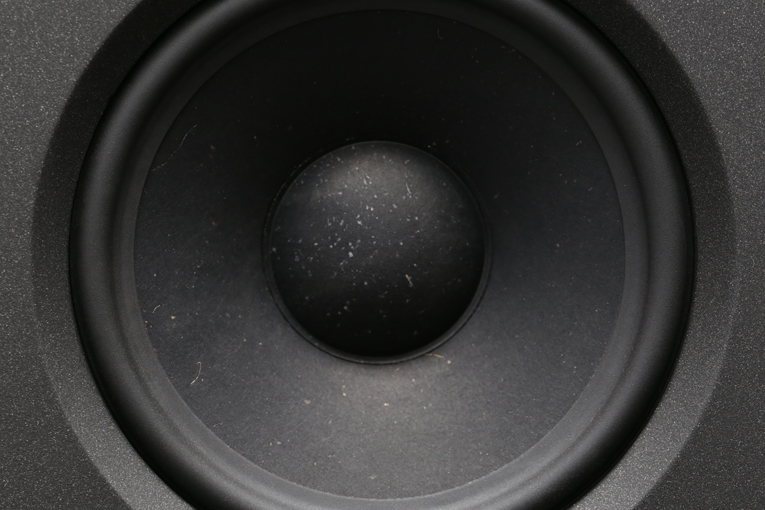
Compared to the B&W-SVS combo, the Figaro Ms’ sound was smoother, with a slightly recessed midrange. This added up to a sound that was more neutral overall — the B&Ws have a more forward midrange and a more tipped-up treble than almost any other speaker I’ve reviewed for SoundStage!. Because of this, Duritz’s voice sounded slightly farther back behind the plane described by the Figaros’ front edges than through the B&Ws, which put it more in front. The B&W-SVS combo also went higher in the high frequencies, which called more attention to cymbal crashes. Due entirely to the SVS sub, bottom-end extension went predictably lower with the B&W-SVS combo, but the Figaro Ms’ overall bass output sounded a little bigger and warmer. With the AudioSolutions and B&Ws playing at matched volume levels, I preferred the sound of “Omaha” through the B&W-SVS combo.
But the Figaros could be played louder than the B&W-SVS combo before I began to feel the urge to retreat to safer SPLs. My preference for the B&Ws was easily canceled out by turning up the volume. With slightly darker recordings, the Figaro Ms needed just a bit more volume to fully express themselves. Overall, I found the Figaro M more accurate than the B&W 705 S2, with a flatter in-room frequency response (above the Schroeder frequency, which is around 200Hz in most rooms). But the B&Ws, with their more forward midrange and up-tilted treble, offered more air and space around instruments.
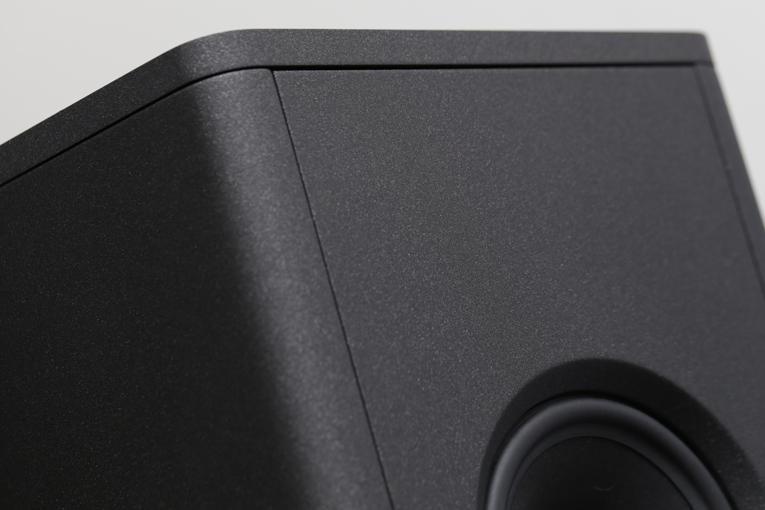
The haunting “Angel,” from Sarah McLachlan’s Surfacing (16/44.1 FLAC, Nettwerk), is mostly just McLachlan singing while accompanying herself on piano. The Figaro Ms reproduced her voice with silky-smooth accuracy — it was never edgy, never sibilant. Each piano note had weight and an appropriately long decay, with a leading edge that was very good, yet not so sharp as to irritate. When I closed my eyes to better focus on the music, the Figaro Ms let me hear through the sound — I seemed to be enjoying an intimate concert put on in my room just for me. Again, the Figaros sounded a tad recessed in the midrange compared to the B&W-SVS combo, with less air around McLachlan’s voice, but for this cut I welcomed these attributes — the B&Ws’ midrange and highs can sound a bit sibilant and too forward. I appreciated the Figaro Ms’ smooth, accurate, inviting sound. I felt I could turn the volume way up without the sound becoming grating or irritating.
“No One Makes It Right,” from Bryan Adams’s You Want It You Got It (16/44.1 FLAC, A&M), was well recorded, with good dynamic range — this was 1981, long before the Loudness Wars. Again, the Figaro Ms delivered the goods: I heard good, tight, satisfyingly ample bass, and spooky in-the-room transparency in the reproduction of Adams’s voice. The backing voices seemed to extend past the edges of the speakers, and detail retrieval was topnotch — I could easily pick out and focus on crisp cymbal crashes and realistically reproduced piano notes, clearly delineated from the powerful drums.
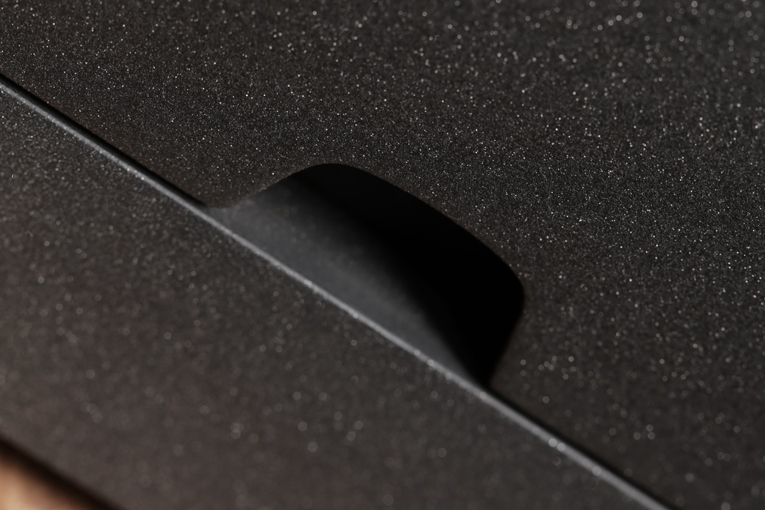
“Feelin’ the Same Way,” from Norah Jones’s Come Away with Me (24/192 FLAC, Blue Note/HDtracks), is a beautiful recording, but Jones’s voice can sound too sibilant at high volumes. I have two versions of this recording — on 16/44.1 CD, and a 24/192 download from HDtracks — but I prefer the 16/44.1 version: the only difference I can hear is more sibilance in the hi-rez version. I chose the latter to test the Figaro M’s ability to retain its composure and smoothness at high volumes — so far, they’d proven their abilities in those regards. The Figaro M easily passed this test. From the opening plucked acoustic guitars at far right and left, before Jones begins to sing, the sound was delicate, detailed, and smooth.
I turned it up when Jones’s closely miked voice enters and all that smooth neutrality remained, with no overaccentuation of sibilants. There was a clear space around the image of her voice, and the snare drum, cymbals, and two guitars each occupied its own space on a three-dimensional soundstage. Playing “Feelin’ the Same Way” through the B&W-SVS combo repeated what was by now a well-established theme: The Figaro M’s midrange was slightly more recessed and slightly less airy, but the overall sound was more pleasant and easy to listen to — the B&Ws sounded too edgy and irritating in the passages with too-high vocal sibilance. The B&W-SVS combo did have an advantage in the imaging of the acoustic guitars to hard right and left — their aural images seemed to float around the edges of the speakers. Through the Figaros, the guitars seemed to emanate more directly from the face of the speaker baffles. The B&W-SVS combo’s images were also ever so slightly more focused with all tracks I listened to — it was just a bit easier to mentally draw an outline around each instrument.
This may be a perfect example of the imaging advantage that high-quality minimonitors tend to have over big floorstanders in small rooms. With its two closely spaced drivers and 3”-narrower front baffle, the 705 S2 is closer to a point source than the Figaro M. I don’t remember having this impression when, in my review of the Figaro B, I compared it with the 705 S2 — the Figaro B’s baffle is only 1.3” wider than the 705 S2’s.
Conclusion
A retail price of $7500/pair is not chump change. Is the AudioSolutions Figaro M worth it? In my room, the Figaro Ms produced sound that was a pure delight. Transparency and detail retrieval were topnotch, equaling those of my reference Bowers & Wilkins 705 S2 two-way minimonitors augmented by an SVS SB-4000 subwoofer. The Figaros’ imaging prowess was also superb, approaching what my reference rig can do. The AudioSolutions’ bass output was satisfyingly tight and detailed, though I found them not the last word in bass slam and extension for floorstanding speakers of their size. Still, their bass performance put a smile on my face. Their top end was extended, free of grain, and never etched or overaccentuated, while the midrange was always smooth and accurate. In fact, the Figaro Ms excelled at smooth, accurate neutrality. They delivered sound that never offended, and that often invited a clockwise turn of the volume knob, and left me with a warm, fuzzy feeling — all without sacrificing detail. In this regard, the Figaro Ms were much better than my B&W 705 S2s, which can, with some recordings, sound a bit too forward and sibilant at high volumes.

It’s reassuring to own a product that one knows has been designed and built by a small team of dedicated craftsmen deeply invested in the end result. And let’s not forget such small but noteworthy touches as AudioSolutions’ “stealth” grille (a cosmetic and acoustic boon), and that selection of 17 different finishes. If you’re in the market for a high-quality floorstanding speaker, I urge you to seriously consider the AudioSolutions Figaro M. It’s worth it.
. . . Diego Estan diego@soundstage.com
Associated Equipment
- Speakers — Bowers & Wilkins 705 S2
- Subwoofer — SVS SB-4000
- Power amplifier — McIntosh Laboratory MC302
- External crossover — Marchand Electronics XM446XLR-A custom balanced passive line-level 120Hz high-pass filter (between preamp and amp)
- Preamplifier-DAC — McIntosh Laboratory C47
- Room correction EQ — miniDSP DDRC-22 with Dirac Live (between digital sources and DAC)
- Digital sources — Rotel RCD-991 CD player, Bluesound Node streamer, laptop computer running Windows 10 and Roon Core
- Analog source — Pro-Ject Debut Carbon Esprit turntable, Ortofon 2M Red cartridge
- Speaker cables — 12-gauge oxygen-free copper (generic) terminated with locking banana plugs
- Analog interconnects — AmazonBasics (RCA), Monoprice Premier balanced (XLR)
- Digital link — AmazonBasics optical (TosLink)
Buy AudioSolutions Speakers in Chameleon Audio
